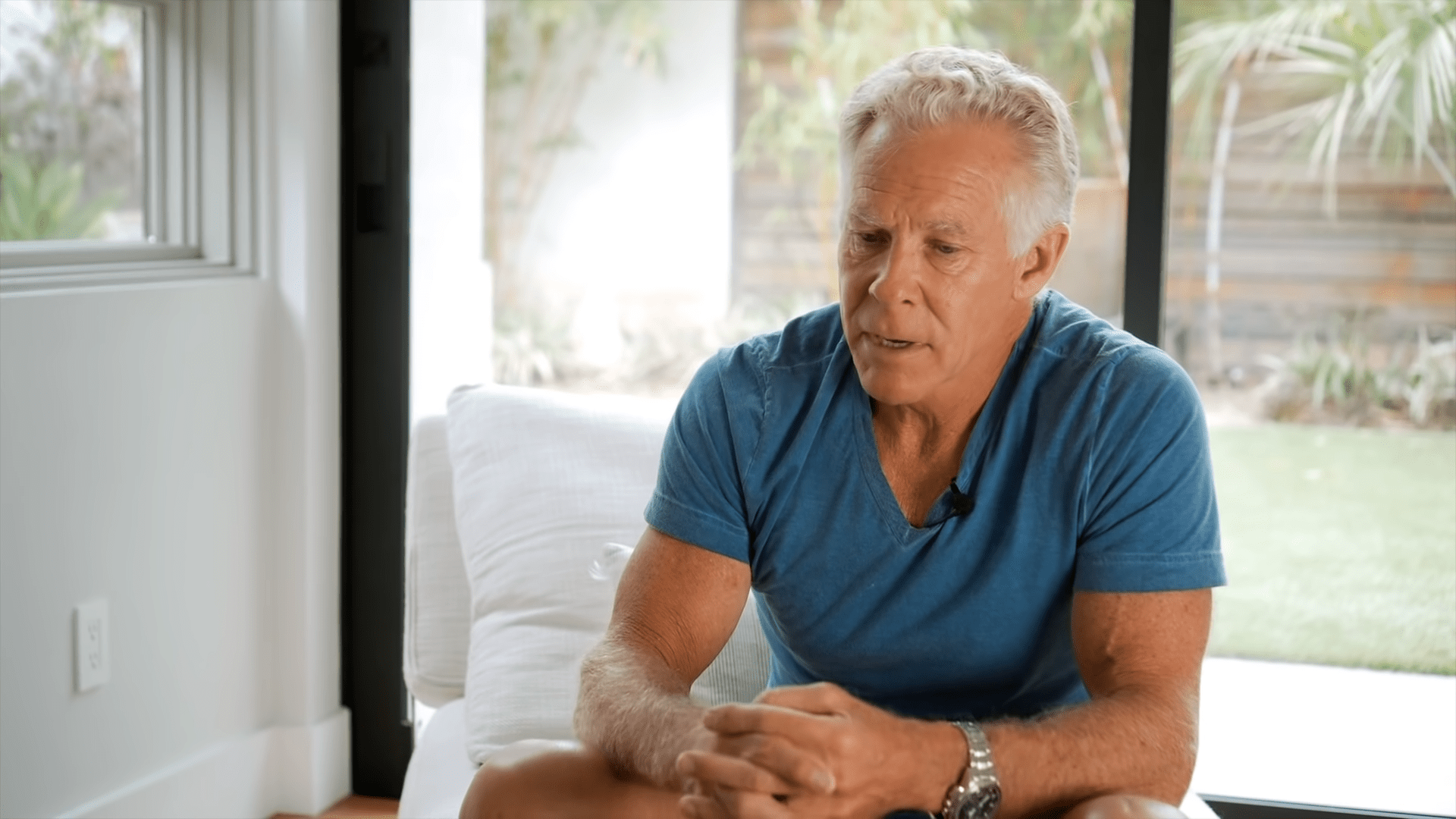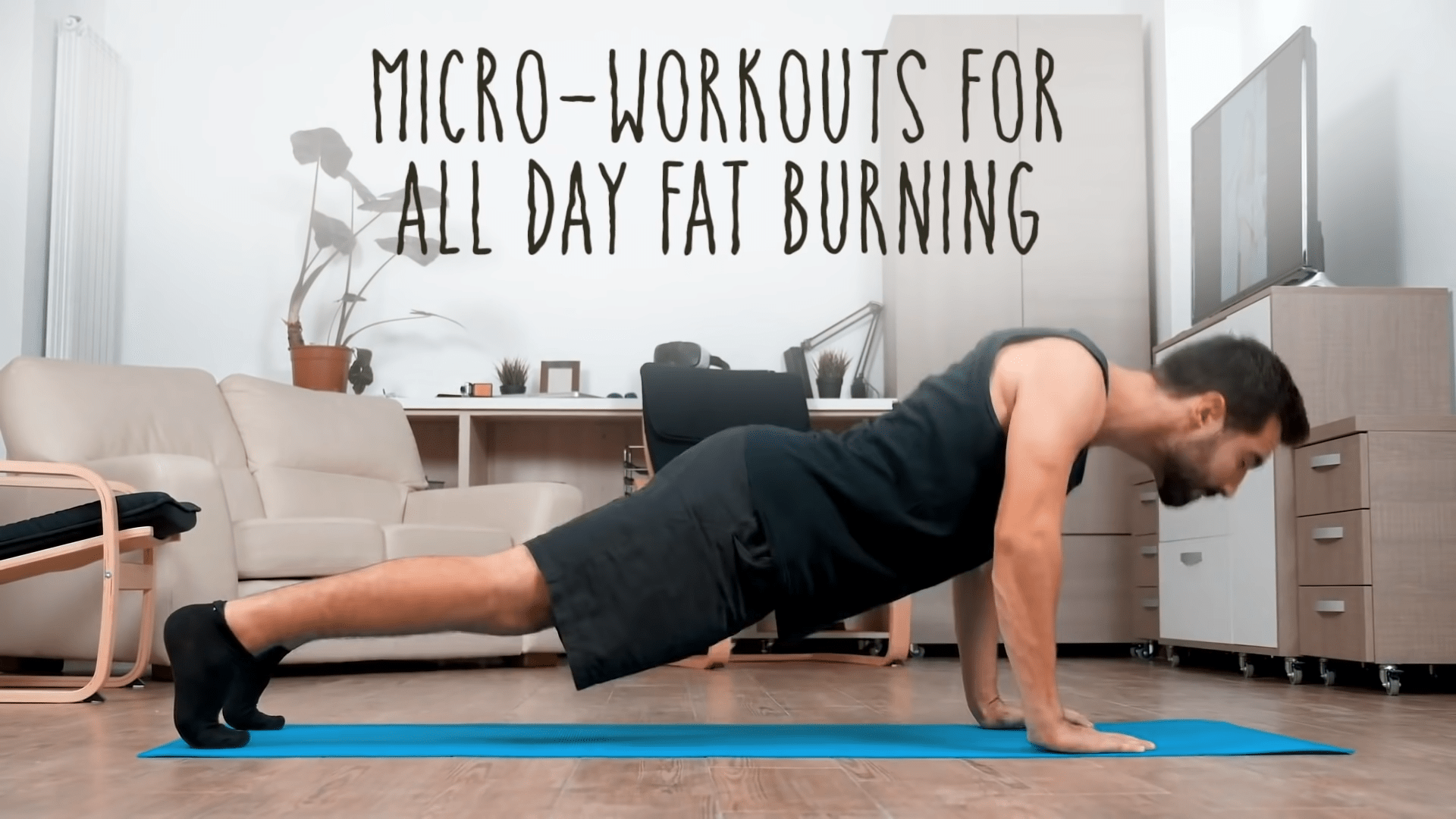Date: October 28th, 2022
Author: Billie Bradshaw
In this video, Mark explores the ins and outs of micro workouts. A micro workout really is what it sounds like; it's the idea of doing several smaller (micro) workouts throughout the day rather than dedicating a full hour or more to a gym visit.
 One that he suggests is push-ups using a countertop or wall. Simply doing a single set of 35 or so 4 or 5 times throughout the day. When doing this, we give ourselves more time to rest between sets to recover and really give each set the effort it deserves so we can maintain quality form.
One that he suggests is push-ups using a countertop or wall. Simply doing a single set of 35 or so 4 or 5 times throughout the day. When doing this, we give ourselves more time to rest between sets to recover and really give each set the effort it deserves so we can maintain quality form.
 This approach can help with overall health by reducing insulin resistence. This approach also reduces sweating, which means you can do this anytime, anywhere. Watch the full video to get the details.
This approach can help with overall health by reducing insulin resistence. This approach also reduces sweating, which means you can do this anytime, anywhere. Watch the full video to get the details.
yeah one strategy that I've used quite
effectively is to not go to the gym and
just bang out you know five sets of 35
press-ups benchpress ups in my house so
I have like I have a kitchen counter
that's you know whatever height it is I
don't go down and do the full pushup but
I might lean against the counter and do
35 or 40 or 50 of those five times in a
day but but not five times in 20 minutes
but five times over the course of a day
so I might have an hour rest in between
them and that's a very efficient and
effective way of getting a workout done
without having to go to the gym and but
giving you sort of a complete recovery
in between sets there's a whole new sort
of philosophy about training art and
that is maybe you take longer rests in
between your sets so in the gym instead
of taking a minute or 90 seconds in
between sets you might even take three
or four minutes now in between sets and
and so one way to manifest that
throughout the course of the day if you
don't go to the gym and doing these
multiple sets of say air squats and
push-ups in your house just whenever you
think about it you could set a timer or
you could just whenever you think well I
think I'll bang out a bunch of push-ups
right now or a bunch of pull-ups if I
have a bar or a bunch of air squats
these add up to a full workout over the
course of a day so rather than going to
the gym and spending 45 minutes or an
hour doing a concentrated focused
workout and then maybe getting a little
bit too tired because you probably did
too much
now you spread that same amount of work
out over an eight-hour day or a ten-hour
day and do it more one activity at a
time with lots of rest in between I
think it has the same sort of net effect
on your muscle growth and your strength
your power and your you're recovering
more fully in between so it's probably a
more legitimate way if you think about
it these micro workouts are more
legitimate way of of avoiding this sort
of overtraining black hole that we fall
into if we're just like wedded to going
to the gym for an hour and I have to be
there for an hour and I can't leave in
50 minutes you know it's got to be a
full hour of work right yeah this active
couch potato syndrome is you know I
think a lot of people are swaging their
guilt by saying I went to the gym for an
hour and now I'm allowed to sit at my
desk and and and you know not do much
and you know overeat because I've earned
it because of the time I spend at the
gym well another way to kind of maybe
get the best of both worlds is to again
spread that work out over the course of
the day micro workout set here a set
there throughout the day walking around
in between I mean I try to make phone
calls when I'm walking to lunch for
instance or if I'm walking back from
lunch or even if I just take a 45 minute
break and I walk outside that's when I
might make a business call but I'm
walking I'm moving I'm trying to find
ways to move I don't have a chair at my
desk at the house at all and now I don't
even have a leaning post I used to have
a leaning post so I just hate either
have a stand-up desk or a complete low
down sit desk so I have a desk where I
can kneel on the ground sit cross-legged
on the ground because it's a whole new
realm of stretches that we call
archetypal rest postures that you can
literally be the stretching fashion and
connective tissue and ligaments while
you're working because of the way you
are kneeling or side sitting or
cross-legged on the floor not on a chair
but just these what we call archetypal
rest postures that are sort of ancestral
in nature before we had chairs before we
had beds and sofas and things our
ancestors where you're standing or
sitting or squatting or side sitting or
cross-legged or whatever and those have
a very beneficial effect on our health
we're you're suggesting as a downside
that would be that you can't get bigger
if you do these micro workouts and I
would suggest that you that you can get
bigger doing these micro workouts that
one way to look at this is that you just
you've taken the hour that you would
have spent doing a workout in which you
might have done 15 total sets combined
of whatever you gonna do and instead of
compressing it into an hour now you
spread it out over eight hours you're
still doing the work the muscles are
still getting the benefit of the
overload but you now you're allowing ATP
to recycle itself fully so you some
people say it takes three minutes for
ATP to fully recycle so when you're
doing a three sets of say bench presses
you know in the first set and then you
rest 90 seconds or maybe you know
whatever maybe two minutes it's not
quite enough to recover the ATP and then
by the time you do the third set you
haven't fully recovered as well now the
thought is well now you if you fully
recover that you're getting the benefit
of maximum work and by the way you're
not sweating because that you know 35
seconds or 40 seconds it took you to do
that set isn't enough to generate the
kind of heat that you're going to sweat
so you could do it with your you
literally could do it the workspace with
a coat and tie on if you had to run a
bet so you're not you're not sweating as
much and you're not accumulating this
this overload and this potential for you
know doing a little bit too much just
because you had an hour that you had to
fill with with workout and I see people
in the gym who spend two hours in the
gym and are you know hitting it hard the
whole time and leave exhausted and then
come back and do it again the day after
that you know day after day after day
and there's a point at which you just
stopped improving my whole goal for
going to the gym is to get stronger and
fitter and more powerful and and burn
more fat I don't want to just go for the
sake of doing work at the gym and not
benefiting from it
so I asked myself what's the least you
know what's the minimum of effective
dose of work and one way to do that is
to spread that work out over the course
of the day yeahit's if we look at the
ancestral patterns again they're you
know they're doing a little bit of
something all day long with with with
rest periods thrown in there so one of
the metabolic effects of that is you you
you don't drop into this insulin
resistance state which you can achieve
in as little as twenty minutes of
inactivity if you're sitting still you
can you can demonstrate some amount of
insulin resistance and over time that
can be that can accumulate so now you're
you're constantly sort of just just on
the edge of ramping up your metabolism a
little bit enough to certainly improve
insulin sensitivity because the work
that you're doing is more high-intensity
for shorter periods of time short bursts
of time you know some some people would
say I made a mistake and I ate you know
way too much of this chocolate cake you
know what do I do and and some some some
of the people in our space would say
well just do 100 air squats right now
you know the the Glueck you'll burn the
glucose off right away and and you'll
get back to that that metabolic
efficiency and metabolic flexibility
that you were that you're seeking
you
